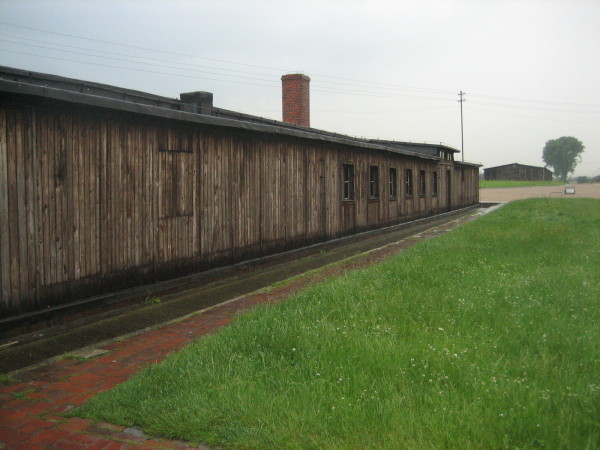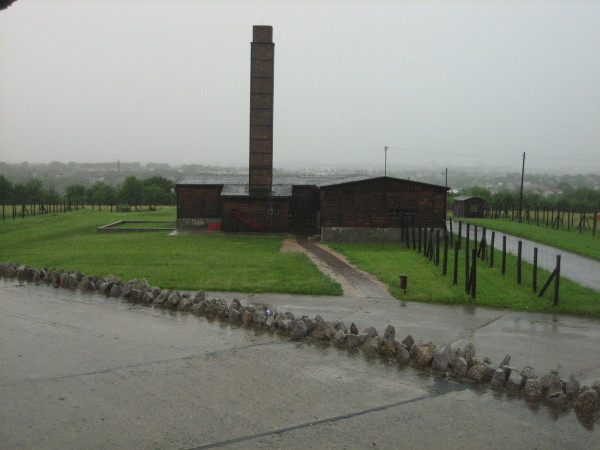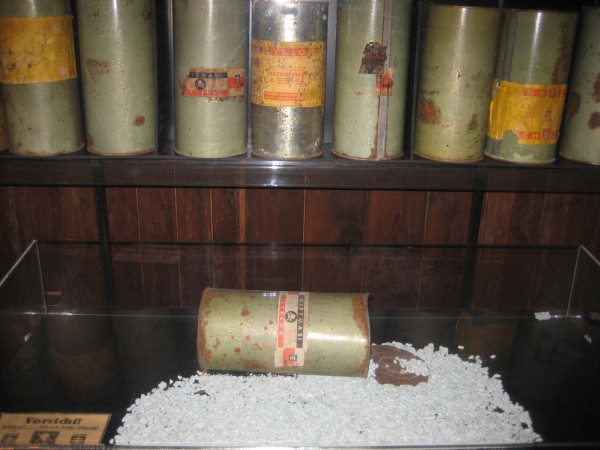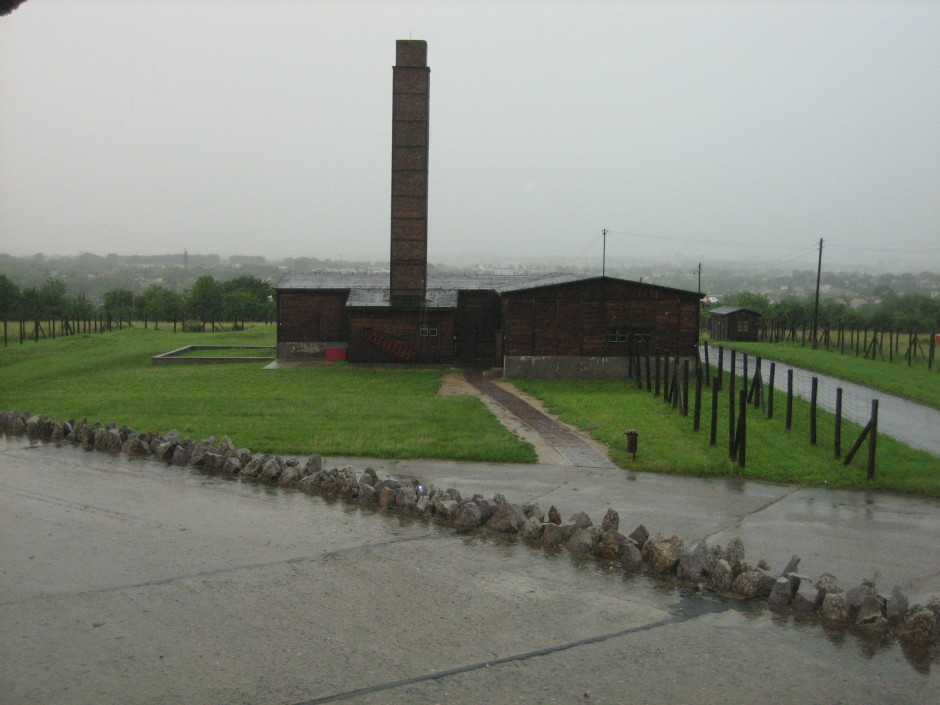Appropriately enough, the sky was gray and ominous on my first visit to Majdanek, the former Nazi concentration camp in eastern Poland.
Adjacent to the city of Lublin, Majdanek is an eerie tableau of wooden barracks, guard towers, a gas chamber, a crematorium with an uncommonly high chimney and barbed wire fences.

Even on a brilliantly sunny day, Majdanek would surely send chills down a visitor’s back.
But on this day of heavy clouds and distant thunder, signalling an approaching rainstorm, Majdanek cast an even darker shadow.
Originally a forced labor camp, it soon became part of the network of Nazi extermination camps, along with Auschwitz-Birkenau, Belzec and Treblinka.
During its existence from 1941 to 1944, around 150,000 people passed through. Eighty thousand prisoners perished here, half in its gas chambers and through executions. Disease and starvation claimed the rest.
Seventy percent of its victims were Jewish. The remainder were largely Polish Catholics, Russians and Ukrainians.
Majdanek was not hidden away in a remote area. Its complex of structures could easily be seen from the outskirts of Lublin. One wonders how Lublin’s residents related to it.
Camps like Auschwitz-Birkenau and Treblinka devoured more Jews than Majdanek. But the biggest single-day, single-location massacre of Jews during the Holocaust occurred in Majdanek. On November 3, 1943, in an operation dubbed Harvest Festival, SS and police units shot 18,000 Jews in a field near the crematorium.
The shots were drowned out by a band.
Majdanek, the first camp to be liberated by Allied forces, was captured by the Red Army on July 22, 1944, six months before Auschwitz was liberated. The conquest was so swift that its fifth commandant, Arthur Liebchenschel, had no time to destroy the camp in its entirety, like his counterparts in Treblinka and Sobibor.
Majdanek is thus the best-preserved Nazi concentration camp in Poland.
After capturing it, the Red Army built a base here, using existing buildings. Prior to their withdrawal, the Soviets left 75 of its 280 structures standing and set aside 90 hectares of the camp for a museum, which in recent years has attracted about 100,000 visitors annually.
Preservation efforts were initially funded by the Polish government. But now, the task of conservation is undertaken by four bodies — the Polish-German Cooperation Fund, the Polish Scientific Research Foundation, the German state of Brandenburg and an evangelical group in the German city of Bielefeld.
In addition, the U.S.-based Ronald S. Lauder Foundation and Yad Hanadiv, an Israeli organization, have contributed funds to preserve artifacts ranging from photographs of the camp to the standard striped-blue pajama uniforms worn by the inmates.
Majdanek was constructed on the orders of SS leader Heinrich Himmler within the framework of Operation Reinhard, the plan to exterminate Polish Jewry.
Construction was supervized by Himmler’s subordinate, Odilo Globocnik, an Austrian of Slovenian descent. Following Germany’s occupation of Poland, he was placed in charge of the SS detachment in the Lublin district, which the Nazis originally intended to transform into a Jewish reservation.
Ironically, Majdanek was built by Jewish forced laborers from Lublin and Soviet prisoners of war captured by Germany after its invasion of the Soviet Union in June 1941. Many of the workers died of exhaustion.
Majdanek was guarded by 1,300 SS personnel, aided and abetted by Ukrainian, Lithuanian and Croatian collaborators.
In the wake of the 1942 Wannsee Conference in Berlin, convened to implement the Final Solution, Majdanek was converted into an extermination camp. Jews from Slovakia, Czechoslovakia, Austria, Germany, France, Holland, Greece and Poland were murdered in Majdanek.
Most of Lublin’s Jews were killed in Belzec, 150 kilometers southeast of Majdanek.

At first, Jews were shot on the edge of Majdanek or in the Krepiecki forest, north of Lublin. But early in 1942, a crematorium was installed, ushering in a period of murder on an industrial scale. In the summer of 1943, when Majdanek was pushed to its killing capacity, a bigger crematorium, equipped with five ovens, became operational.
Prisoners herded into the gas chamber were killed by either carbon monoxide or Zyklon-B gas. Zyklon-B, which left tell-tale blue marks on the walls, worked faster, killing victims within about 15 minutes. The Nazis preferred carbon monoxide because it tended to be more chemically stable and did not require dry conditions.
Visitors to Majdanek can enter the former gas chamber. The experience of finding yourself in a dark, confined space, where thousands of people suffocated to death, is unsettling.
The exhibits are horrific. Empty Zyklon-B canisters, as well as photographs of hard-eyed perpetrators, greet visitors.

When Majdanek was liberated, the Soviets hanged a few of its commanders and invited journalists on inspection tours to expose the infamy of Nazi crimes to the world.
Several decades later, in what was then West Germany, SS soldiers who had worked in Majdanek were put on trial. The majority were acquitted or died of natural causes.
Midway through my tour, the sky grew darker and a torrential downpour pounded the camp. The lashing rain could not wash away the crimes that were committed in Majdanek.
